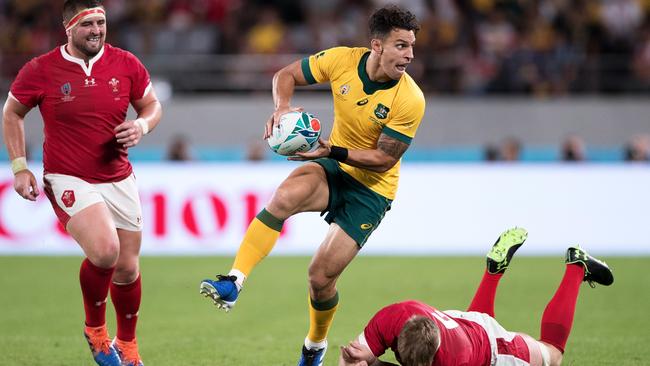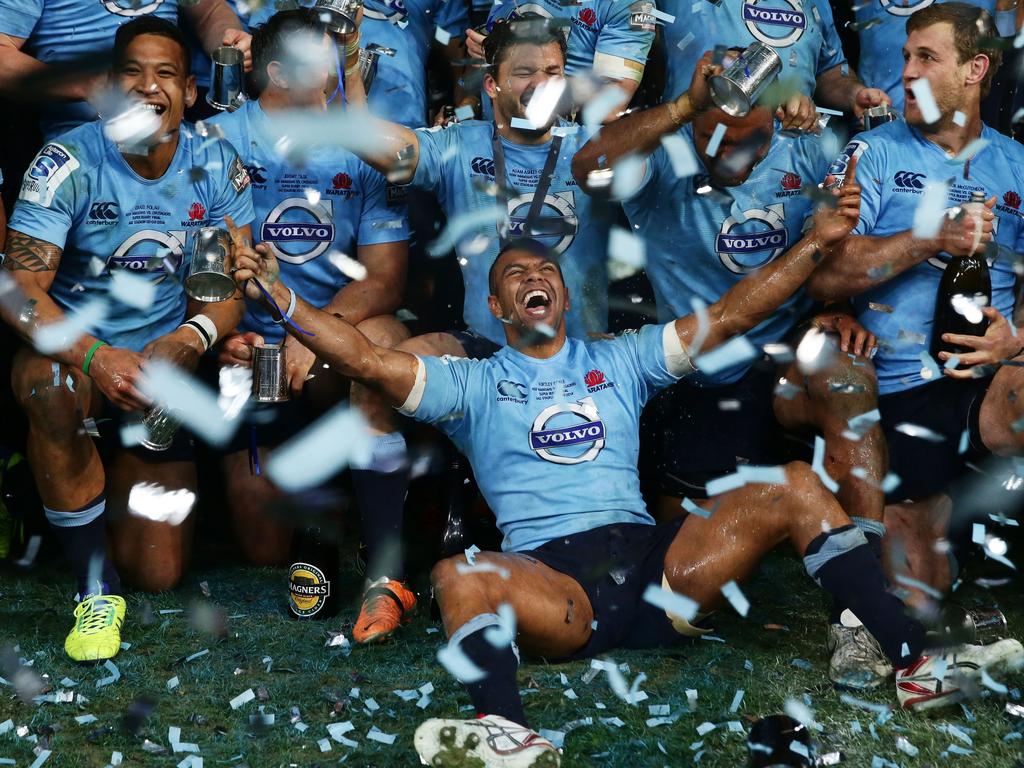World Rugby oblivious to rugby league rip-off in Super Rugby AU rules
World Rugby wasn’t aware Australia had borrowed from rugby league in the law variations it intends to use in the rebooted Super Rugby AU.

World Rugby officials aren’t concerned that Australia has borrowed from rugby league in submitting some of the law variations it intends to use in the rebooted Super Rugby AU competition because they weren’t aware they were taken from the 13-a-side code.
Among the law variations put forward by Australia were for a line dropout if the attacking side are held up over the tryline, and also for a 50-20 rule, which is designed to encourage defending sides to drop their wingers out of the defensive line to cover for attacking kicks for touch, thereby creating more space for sides to spread the ball wide.
Both rules, which were approved on Monday night by World Rugby, are shameless “lifts” from rugby league.
Yet at a time when highly respected sports writers such as Malcolm Knox of the Sydney Morning Herald have been writing that league should merge with rugby in this country, global rugby officials have such a low awareness of rugby league that most were unaware they were borrowing league laws. Indeed, most thought the law variations were a rugby invention.
“They have been pretty accepting of them being good ideas,” said Brett Robinson, the former Wallabies backrower who is now Australia’s representative on the World Rugby executive committee. “They don’t actually see a lot of rugby league, unfortunately, so they think those ideas are ours. Rugby is a massive global game. But it is just dwarfed by AFL and rugby league within Australia.”
As basically the first sport anywhere in the world to come out of the COVID-19 lockdown, rugby league is acting as a trailblazer for rugby in a number of ways. Robinson, in particular, has been forwarding World Rugby the NRL’s broadcast numbers as a guide to knowing what to expect when rugby gets up and running but in front of empty stadiums. He would, presumably, have been filing good news-bad news reports.
When the NRL first came out of shutdown, the Brisbane-Parramatta game attracted 952,000 spectators, record ratings as Nine blitzed its rivals with a 30.3 per cent share, well ahead of Seven (23.6 per cent) and Ten (22.1 per cent). But the numbers fell dramatically in the second week, with reports that only 619,000 tuned in for the corresponding match between Brisbane and Sydney Roosters.
“Still, it looks like the general acceptance is that what the broadcasters are doing is popular,” Robinson said.
“People are enjoying having football back, so again for us in rugby that’s a good sign.”
Rugby Australia still does not have a confirmed broadcast deal for this season’s competition but interim chief executive Rob Clarke believes a deal is close.
“We are making good progress there and would hope to be wrapped up in the next few days,” Clarke said.
Robinson was fully behind English coach Eddie Jones’s observation that Test rugby had moved down the track of becoming as stop-start as America’s National Football League.
The ball-in-play statistic has hovered around 35 minutes for the whole of the professional era but what has climbed dramatically is the time the ball is out of play. As Jones said, it is now common for a match to stretch to 110 minutes because of time wasting in scrums and lineouts, head injury assessments, TMO rulings and referees spending more time conferring with their assistants.
As a result, rugby has developed more and more into a power game, populated by huge men who, because of all the stoppages, are often able to complete the entire game.
Jones’s solution is to reduce the number of reserves from eight to six. But while this would create more fatigue for players and would bring smaller men far more into their own, it would do nothing to curb time wasting.
To stop the game becoming more of a war of attrition on the gain line, Robinson believes the defence should be pushed back and then be rigorously enforced.
“I know there have been all sorts of trials about having the defensive line set a metre behind the last player’s foot in the ruck,” he said. “We have even been pursuing whether technology could be more aggressive around managing the offside line.
“Laser beams, in other words. It’s all the levers you can look at to use to create more space in the game — fatigue, managing the offside line, ball in play time. Giving forwards (too much) recovery time simply reinforces the power element.”
Meanwhile, it seems unlikely World Cup discovery Jordan Petaia will be able to return for the Reds until at least the mid point in the 12-week Super Rugby AU competition. He is training again but only with the “rehab” group.





To join the conversation, please log in. Don't have an account? Register
Join the conversation, you are commenting as Logout